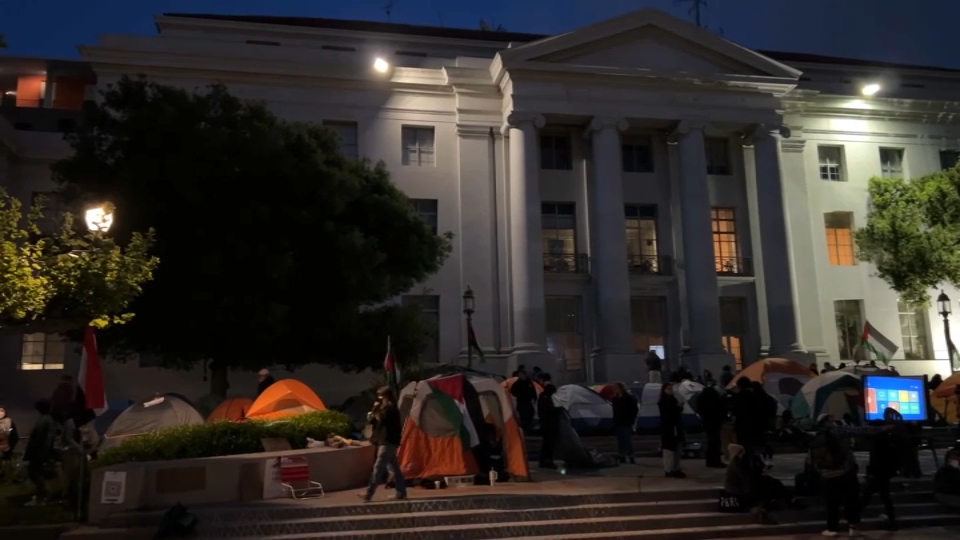It’s no surprise the walls of San Francisco’s venerable Art Institute are covered in student art. Inside its main gallery, bold youthful paintings are perched like minions beneath Diego Rivera’s giant fresco, painted by the artist in 1931, just several years after the opening of the school’s fortress-like Russian Hill campus.
Even in the school’s library, wall arches encased frescos of Native Americans, painted in the 1930s. Facilities manager Heather Hickman Holland figured she knew all of the school’s art, even the painted red triangles left by a performance artist in the seventies who scaled the school’s amphitheater.
But walking a lower, dim hallway — Holland noticed something odd among the white barren walls.
“I noticed what I thought were spiderwebs in the corner,” Holland said, her voice reverberating down the concrete corridor. “As I got closer I was like, wow those spiderwebs look like heads.”
Holland realized the walls secretly held several frescos painted sometime in the school’s lifetime. As the weeks went on, she noticed more of them in the hallways - the gentle impression of heads and skyscrapers revealing their ghostly tombs of white paint.
“I was like ‘oh my gosh it’s a fresco,’” Holland recalled. “A painted over fresco.”
Holland quizzed the school’s older staff members and the school’s librarian to see if they knew of any old frescos. No one did.
Local
She and librarian Jeff Gunderson began poring through the school’s archives looking for any images or mentions of the paintings. An arched doorway in the same hallway held another 1930-era mural so Holland took that as a clue.
Finally Gunderson discovered an article in an old San Francisco Examiner detailing a 1935 fresco painted by then-student Frederick Olmstead, who had also contributed frescos to Coit Tower and the school’s own library.
“So Jeff and I started looking through the archives,” Holland said, “and he found one picture of a fresco we’d never seen before and didn’t know where it was.”
The pair of art sleuths examined a photo of the fresco’s topography — eventually tracing it to a wall in the lower hallway. The identity of the other frescos and their creators remained mysteries, as was the reason for their covering.
“There probably were times after World War II when they realized they wanted more wall space,” Gunderson theorized. “These things probably looked a bit dated in a way.”
Through a preservation grant, the school hired an expert to peel away some of the wall paint, revealing small squares of the underlying frescos. The tantalizing strips of color only served to whet the appetite of the school’s art preservationists - who hope to secure the funds to have the frescos fully restored.
“There’s no reason to not try to uncover them and see what happened to them,” Gunderson said.
In an art school with limited wall space and endless students, it’s understandable why the school might’ve covered the paintings - especially with photography exploding in the thirties as an art form. Some of the hidden frescos were covered with long boards to hang photographs.
Still, the discovery reinforced the notion that even a well-worn institution of art is capable of keeping a whole bevy of secrets.
“It does make you look a little differently at everything around here,” Gunderson said.



